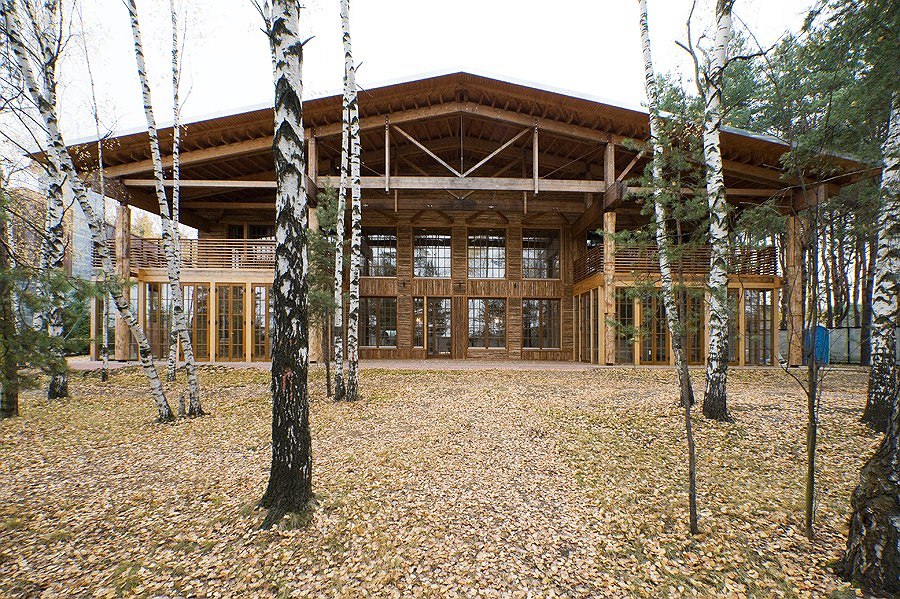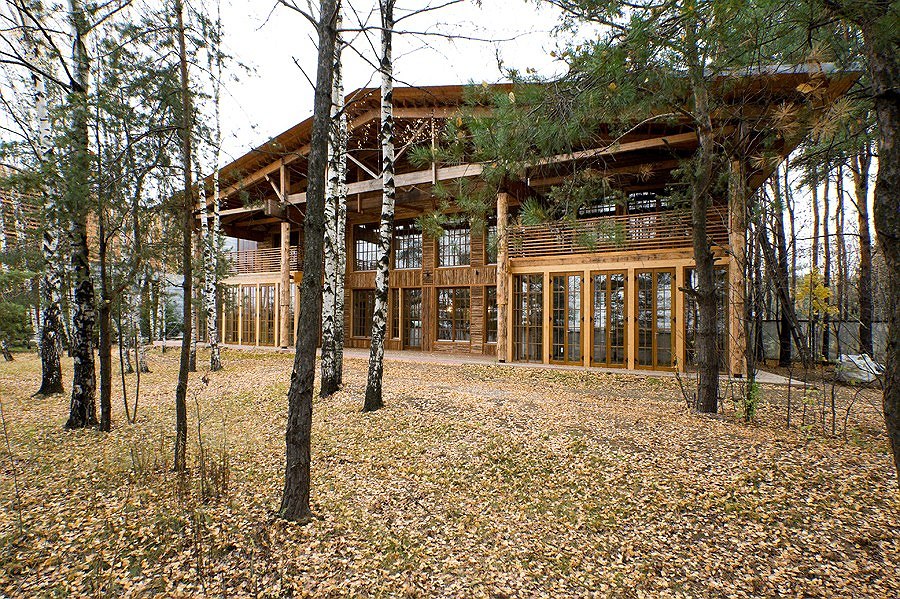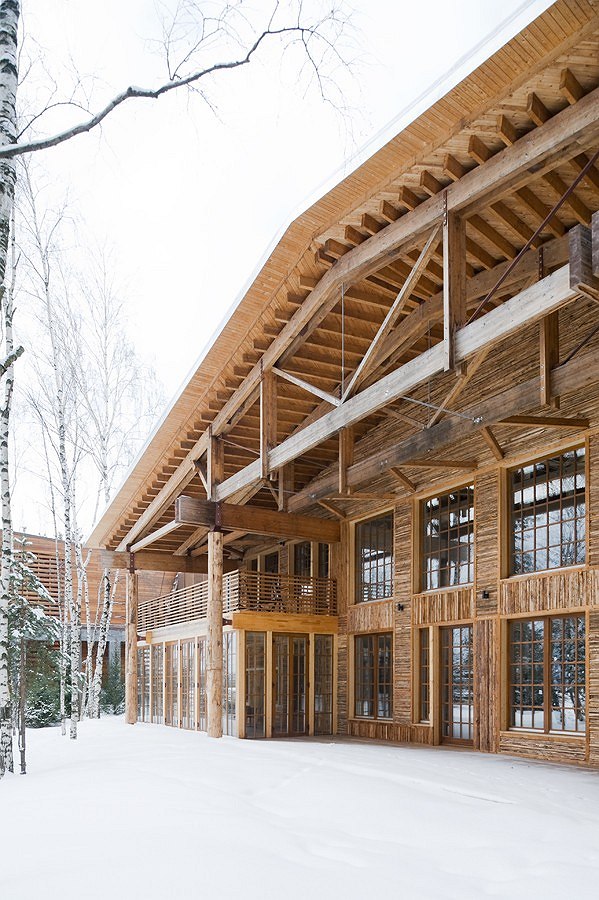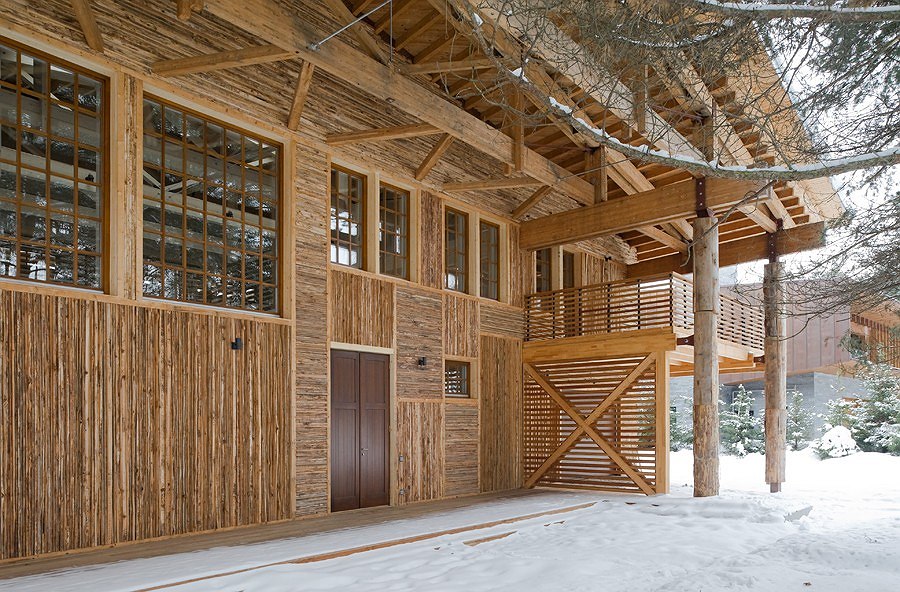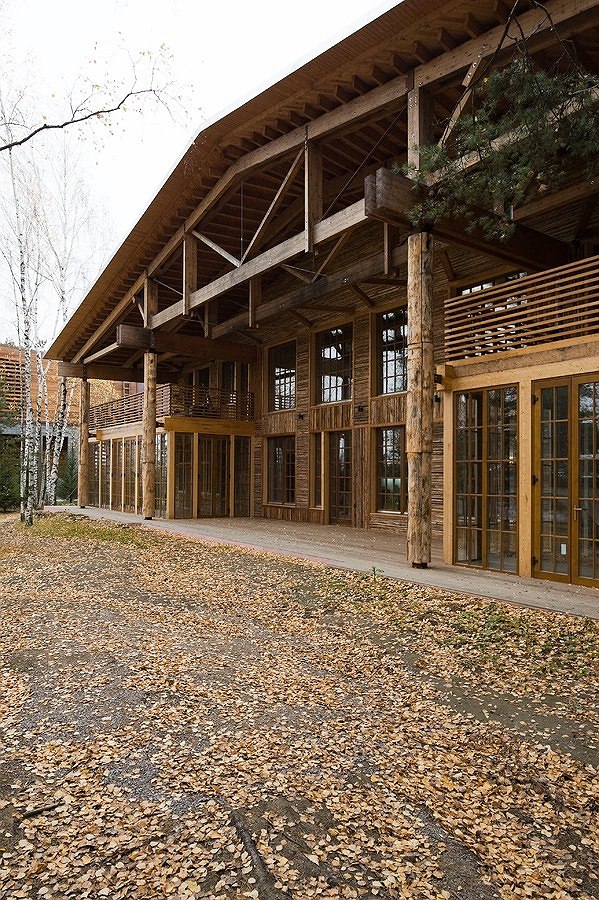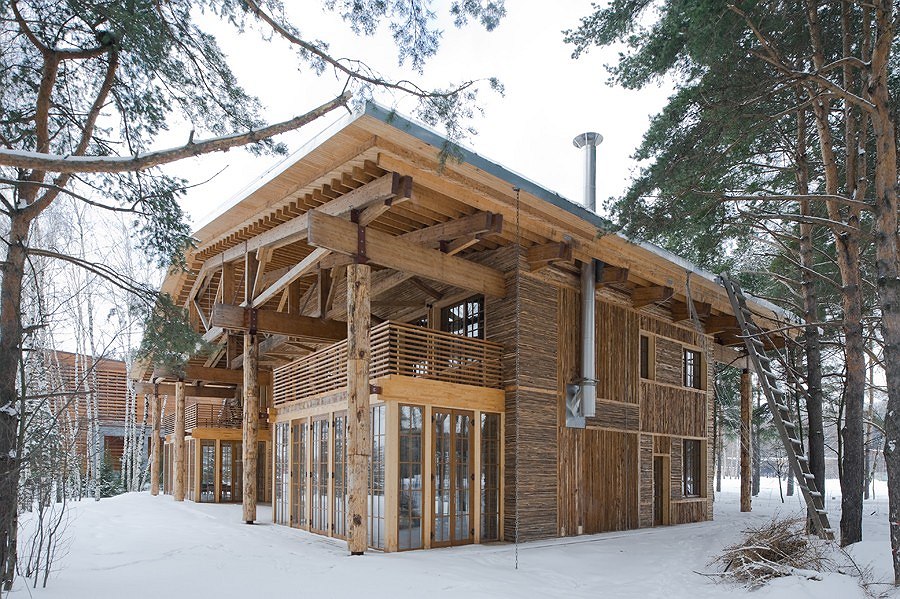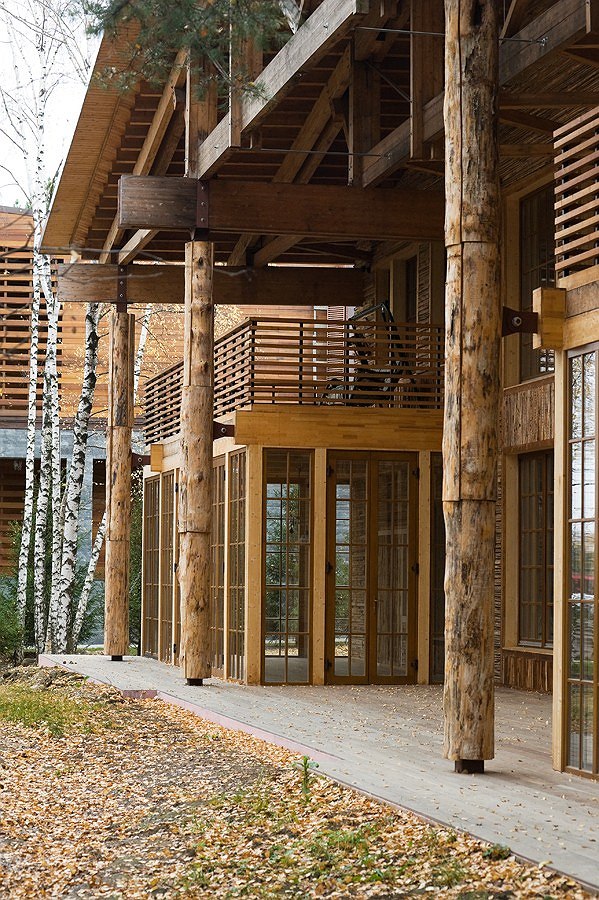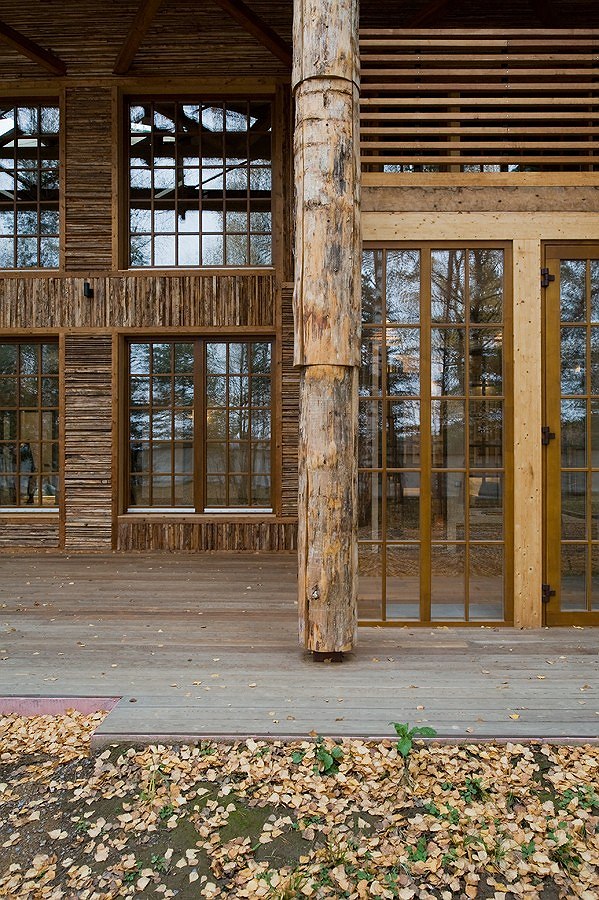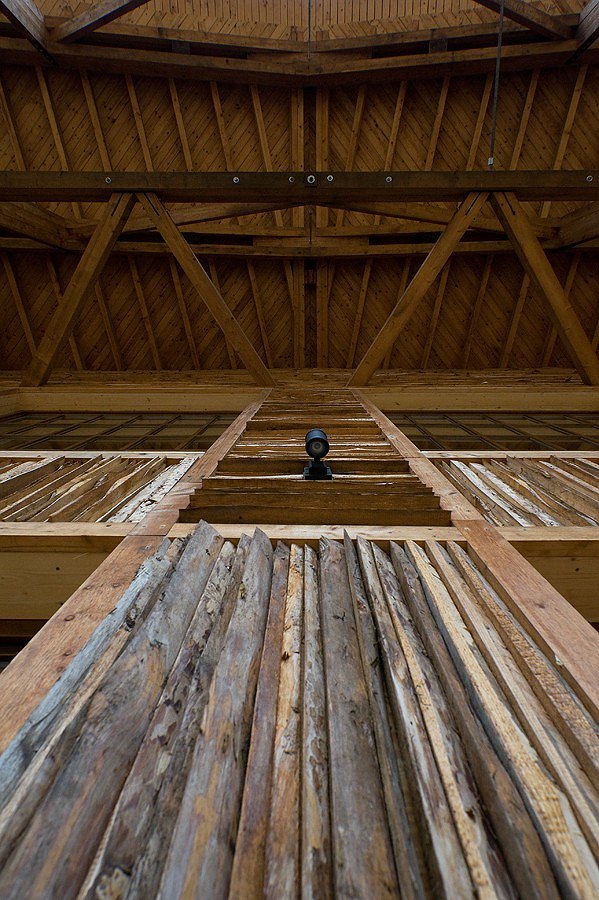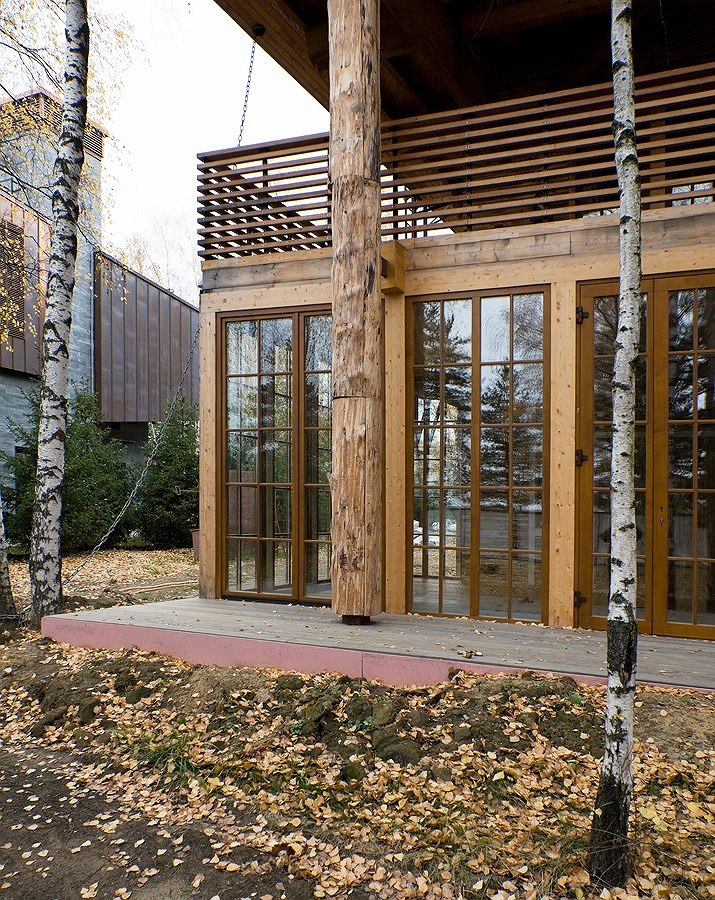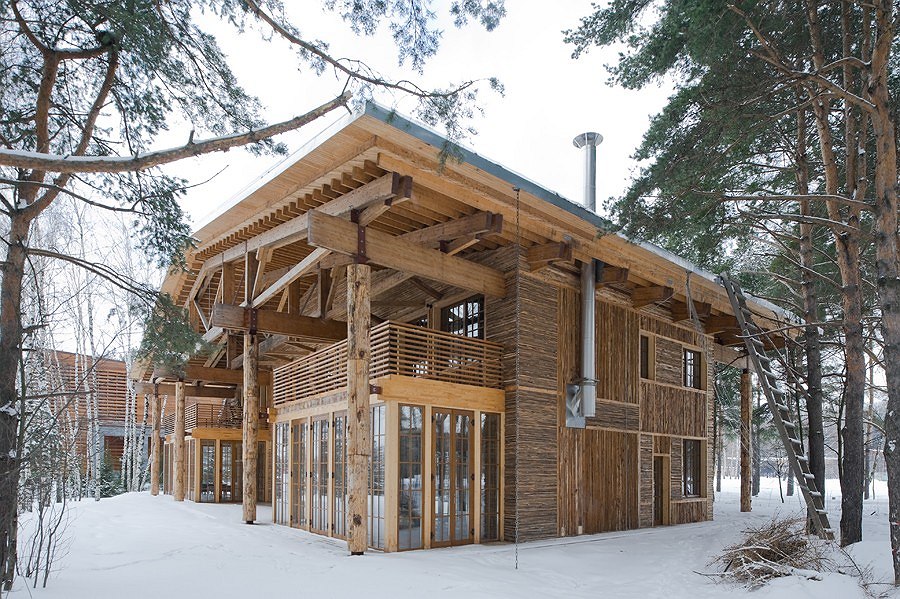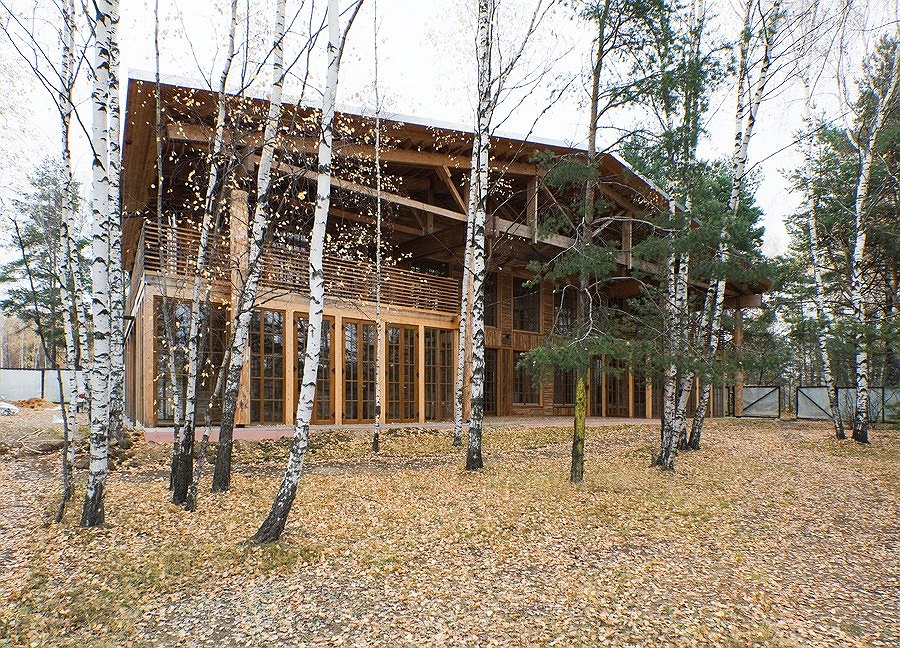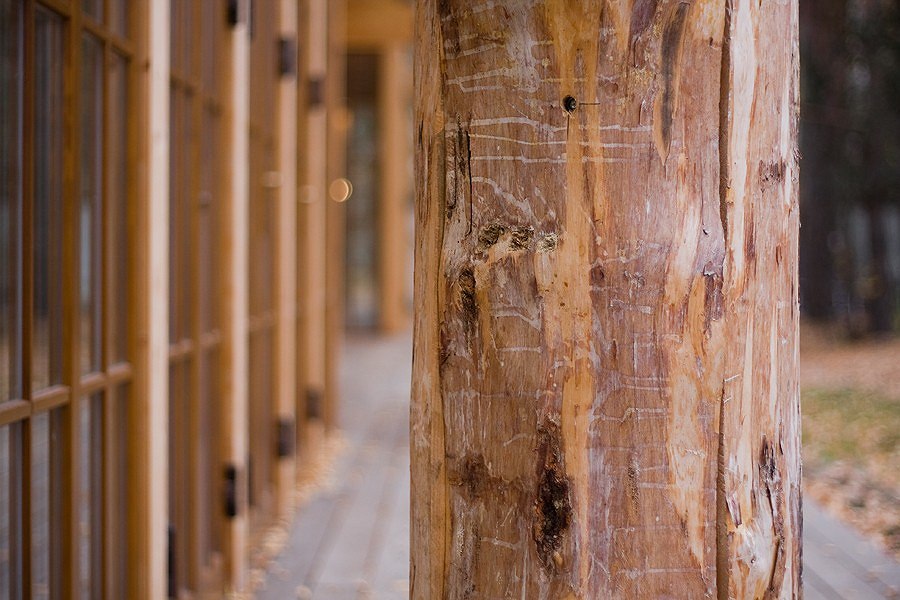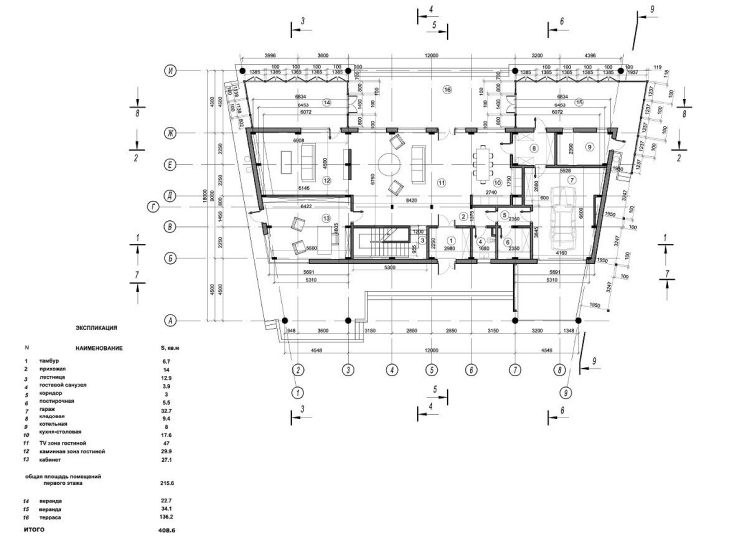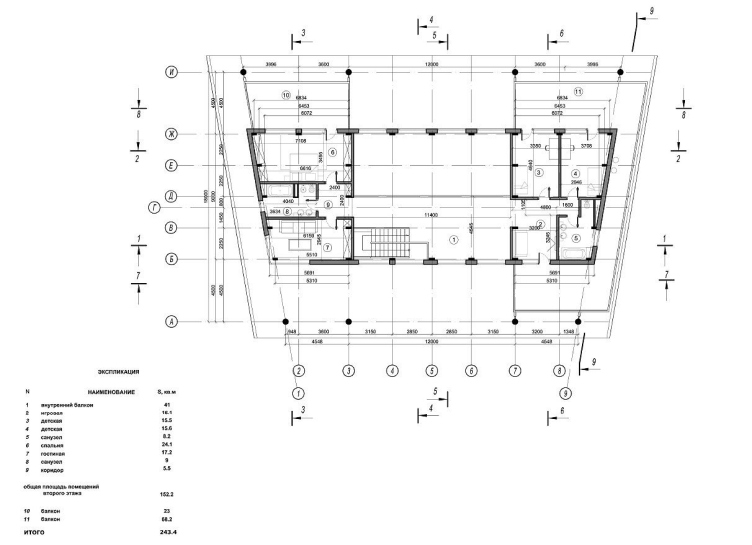The residential house that has
been built on the bank of
As the architect reminisces, the commissioner and his wife wanted to get something
that would look and feel like the “government dacha” (elite country house, the
kind that belongs to the top government officials – translator’s note) – a
house in a sanctuary forest, among the pine trees at the water’s edge, whose
image would harmoniously combine luxury and rustic simplicity. “I organized a small
guided tour of the community for them – Totan Kuzembaev shares – and what they
like most of all during this walk was our first yacht office. When we were building
it we used wooden hunches and cut-offs that people at sawmills usually throw
away without giving them a second thought or thinking of utilizing them”. Because
of their natural simplicity, the facades of the yacht office were such a hit with
our clients that they asked to make the façade of their house look exactly the
same”.
In other words, without having even avague idea of how the future house
would look like in general, the architect knew for sure that it was going to be
built from hunches. This material became a starting point of sorts and to a
large extent it determined the laconism and the rough simplicity of the
building under construction. The basic outlines of the construction were gradually
showing through – the gable roof, overhanging way beyond the main volume,
spacious verandas, open balconies and retro-style fenestration. Kuzembaev’s
master hand is seen here at a first glance, even in this same
"skeleton" of the roof that he "lets out" - the strict
rhythm of the girders almost hypnotizes the observer with its complexity and
the precision of the engineering solutions.
The most “unexpected” element of
this seemingly quite traditional and old-fashioned building, in the best sense of
the word, is the already-mentioned hunch finish of the façade: the hunches are put
on at times vertically, at times horizontally, thus forming a surface that is
jagged and unevenly voluminous. Incredibly charismatic are the columns of rough-hewn
timber that support the heavy structure of the roof – they add to the house's
brutalism, brutalism that is not exquisite but ostentatiously simple and rustic
and which is exactly what makes the house different from other buildings in the
community.
Quality Mark
Among the numerous buildings that Totan Kuzembaev has deigned for the resort of Pirogovo, there is one whose name inevitably sends the guests into a state of slight confusion. It is the “Ъ” (“hard sign” in Russian – translator’s note) building whose name is pronounced as “err” and puts one in the mind of the times of the ancient Russ with its log-crib buildings.
